Table of contents
Romaine lettuce ( Lactuca sativa var. longifolia , Cos group) is a popular leaf lettuce that can be eaten raw or cooked. Some varieties also produce red leaves.
Use in the kitchen
What is romaine lettuce? Romaine lettuce is a garden lettuce with an elongated, oval, rather loose head. The green outer leaves have a firm consistency with a pronounced central leaf rib and a spicy, slightly bitter taste. The inner yellow-white lettuce heart is more tender and tastes sweeter. Romaine lettuce is crisper thanbutterhead lettuce and Batavia lettuce , but smoother to the bite than iceberg lettuce .
In Mediterranean cuisine, romaine lettuce is often eaten as a vegetable. The leaves are lightly sautéed like spinach or chard and refined with a little vegan oat cream . Halved romaine lettuce hearts, seasoned with salt and pepper and briefly fried in a pan, make a quickly prepared dish.
Can you eat cooked salad raw? Cooked salad, as romaine lettuce is also called, can be eaten raw. Romaine lettuce is one of the basic ingredients of the famous, high-calorie "Caesar Salad" from the USA. An oil-free salad dressing can easily be made with walnuts , either as a light vinaigrette with balsamic vinegar or as a dressing with orange juice and ginger . Alternatively, an oil-free dressing can be made from avocado and lemon juice . Because of its own flavor, romaine lettuce also tolerates spicier ingredients such as black olives , radishes , alfalfa sprouts , rocket , garden or real watercress . A topping of pumpkin seeds , linseed or sunflower seeds gives the salad a crunchy, nutty addition.
Vegan recipe for braised romaine lettuce with tomatoes
Ingredients (for 4 people): 4 romaine lettuces, 5 medium-sized tomatoes , 5 spring onions , 4 tbsp balsamic vinegar , 3 tbsp water , 2 tbsp capers , 40 g pitted black olives , 4 sprigs of sage , 40 g pine nuts ,pepper .
Preparation: Separate the lettuce leaves from the stalk, wash and spin dry. Wash and quarter the tomatoes, wash the spring onions and cut into fine rings, drain the capers. Roughly chop the olives or cut into rings. Wash the sage leaves, shake dry and chop. Fry the lettuce leaves, tomato pieces and spring onions in a frying pan for 1 minute. Then add balsamic vinegar and water and simmer covered for 1 minute. Add the capers, olives, sage leaves and pine nuts. Season with pepper to taste.
Vegan recipes with romaine lettuce (raw) can be found under the note: " Recipes that have the most of this ingredient ".
| Not only vegans or vegetarians should read this: Vegans often eat unhealthily. Avoidable nutritional mistakes . |
Purchasing - Storage
Most supermarket chains such as Coop , Migros , Denner , Volg , Spar , Aldi , Lidl , Billa , Rewe , Edeka or Hofer have romaine lettuce in their range, occasionally also in controlled organic quality (organic quality). You can also buy romaine lettuce in organic supermarkets such as Denn's Biomarkt or Alnatura , seasonally at the weekly market, in subscription boxes or directly from the farm. Romaine lettuce is often available in smaller forms (lettuce hearts), where several are in one package (plastic). Prefer unpackaged romaine lettuce, as a whole.
In Central Europe, romaine lettuce is harvested from July to September as an outdoor product. 2 It is available from the beginning of October to April from outdoor cultivation in Mediterranean countries. Outside of the season, the lettuce is grown in greenhouses and can therefore be found in stores almost all year round.
The availability of romaine lettuce in the supermarkets mentioned varies depending on the size of the store, catchment area, etc. Our recorded food prices for the DA-CH countries can be found above under the ingredient image - and by clicking on them you can see their development at various suppliers.
Storage tips
Romaine lettuce can be kept in the fridge for 2 to 3 days. Because of its thicker leaves, it is not as sensitive to pressure as other lettuces.
Ingredients - Nutritional values - Calories
Romaine lettuce (raw) has a water content of around 95% and is very low in calories with 17 kcal per 100 g. The protein content (1.2 g/100g) is low and there is hardly any fat either. Romaine lettuce has around 3.3 g of carbohydrates and 2.1 g of fiber per 100 g. Potatoes , sweet peppers and asparagus have the same fiber content per 100 g. Endive and chicory have more fiber, both of which have 3.1 g of fiber per 100 g. 3
Raw romaine lettuce contains a lot of vitamin K (137% of the daily requirement) at 102 µg/100g.Lettuce and rocket have a similar content. Kale (705 µg/100g) and chard (830 µg/100g) have high vitamin K values and can both be eaten raw as a salad. 3
Folate (folic acid) is present in romaine lettuce at 136 µg/100g, which covers 68% of the daily requirement. Kale (141 µg/100g) and endive (142 µg/100g) have a similar amount of folate. This corresponds to about 70% of the daily requirement. Young spinach , which can also be eaten raw as a salad, contains more folate (194 µg/100g). 3
Romaine lettuce also contains a relatively high amount of vitamin A : 100 g contains 436 µg, which covers around 55% of the daily requirement. This is comparable to spinach (469 µg/100g, 59% of the daily requirement). Carrots are known for their high vitamin A content, containing almost twice as much at 835 µg/100g. Sweet potatoes also contain a lot of vitamin A (709 µg/100g, 89% of the daily requirement). 3
You can find all the ingredients of romaine lettuce, how much it covers your daily needs and comparison values with other ingredients in our nutrient tables below the ingredient image.
Health effects
Is romaine lettuce healthy? Romaine lettuce is rich in vitamin K. The body needs this vitamin for blood clotting. It also prevents calcium deposits in soft tissues and supports the regulation of cell processes (eg cell division). Vitamin K also inhibits bone loss, as the enzyme osteocalcin, which regulates bone mineralization, is dependent on vitamin K. 8
Eating romaine lettuce with a mixed meal can have a positive effect on blood sugar levels, as shown in a study. The effect did not occur when the meal was supplemented with watercress or a fiber supplement. Therefore, the positive effect appears to be due to substances in romaine lettuce that have not yet been clearly identified. 9
A study on mice showed that consuming a mixture of romaine lettuce extracts and Baikal skullcap ( Scutellaria baicalensis ) 10 or exclusively from romaine lettuce effectively increased the quality and duration of sleep. 17,18 The bitter substances lactucin and lactucopicrin contained in romaine lettuce are known to be sleep-promoting substances. The researchers hope that in the future they will be able to produce an alternative preparation for the treatment of insomnia and sleep disorders.
Dangers - Intolerances - Side effects
Romaine lettuce, like other leafy and root vegetables, contains nitrate because it needs it as a source of nitrogen to grow. Certain types of vegetables accumulate more nitrate from the soil than others (spinach, rocket, lettuce, beetroot, radish), but this varies greatly depending on the season, amount of fertilizer, type of cultivation, etc. Nitrate itself is less of a health risk, but in the body or in food it is converted to nitrite. Incorrect storage/transport or insufficient hygiene (bacteria) promotes the conversion of nitrate to nitrite. 11 Excessive amounts of nitrate and nitrite are problematic for certain groups of people (infants and small children) because they hinder the transport of oxygen in the blood. 8,12
Nitrite reacts with amino acids (amines and amides) to form nitrosamines, which are considered carcinogenic. 8,11 Nitrite is found as added nitrite curing salt in processed meat products such as ham or bacon. Strong heating (frying or grilling) of cured meat products promotes the formation of nitrosamines. 16
If the nitrate in the diet comes from vegetables, it also has numerous positive effects. 11 You can find out more about this under the ingredient Batavia lettuce . If you want to consume as little nitrate as possible, you should choose seasonal organic romaine lettuce, as this contains less nitrate than conventionally grown lettuce (more on this under Cultivation-Harvest). Iceberg lettuce and radicchio, in contrast to other leaf lettuces, have a low nitrate content. 13 Blanching or cooking vegetables, removing outer leaves and leaf stalks, and properly reheating nitrate-rich vegetables (not reheating for babies) can also reduce the nitrate content. 16
There are maximum nitrate levels for leaf lettuce, which vary between 3000 and 5000 mg/kg depending on the season (summer/winter) and type of cultivation (greenhouse/open field).
Ecological footprint - animal welfare
The CO 2 footprint of lettuce depends on the country of origin, the cultivation method and the respective packaging. In the literature you can find figures between 0.45 kg CO 2 eq/kg (Spain), 0.5 kg CO 2 eq/kg (England) 19 and 0.59 kg CO 2 eq/kg 20 for lettuce, exact figures for romaine lettuce are not available. If the product is imported, transport routes and the resulting emissions and cooling have an additional negative impact on the ecological footprint . Lettuce is one of the most frequently thrown away foods. To avoid unnecessary waste, you should only buy the amount of lettuce you really need. Proper storage also contributes to a longer shelf life. In addition to agricultural production (fertilizers, pesticide use, farming methods, energy for machines and subsequent processes), transport also contributes to the CO 2 footprint for lettuce. 19
There are no exact figures for the amount of water needed to produce 1 kg of romaine lettuce, but it takes about 237 litres of water to produce 1 kg of lettuce. 21 This amount has a major impact on the environment in countries with lower rainfall, as it is often necessary to resort to artificial irrigation, which in turn is energy-intensive. 22
Romaine lettuce can usually be purchased in plastic packaging, but loose products are less common. Although the plastic packaging helps the lettuce to last longer, it also worsens the ecological footprint by using additional resources.
The pesticides and herbicides used in conventional agriculture are often found in the end product, including lettuce. 23 Therefore, when shopping, give preference to organically produced lettuce. This also has the potential to reduce the ecological footprint. 22
Worldwide occurrence - cultivation
Romaine lettuce comes from the Mediterranean and the Middle East and is considered one of the oldest cultivated varieties of garden lettuce. Due to the name 'Roman lettuce', it is assumed that it reached Western Europe and later North America via Rome or Italy. 5
Romaine lettuce and other leaf lettuces are grown worldwide, with China, the USA and India being the main growing areas in 2020. In Europe, this and other varieties are mainly produced in Spain, Italy, Belgium and France. 6
Found in the wild
Romaine lettuce is a cultivated group of varieties of garden lettuce ( Lactuca sativa ) that does not occur in the wild. Cultivated garden lettuce can be traced back to several wild forms, with spiny lettuce ( Lactuca serriola ) being the closest relative. 15 This grows in the warm temperate zones of southern Europe and western Asia, but is spreading further and further into northern Europe. 4
Cultivation - Harvest
Romaine lettuce can be planted well in the garden bed, balcony box or in a pot. It needs a sunny location and humus-rich, nutrient-rich soil. The lettuce can be grown indoors or in a greenhouse from February to March and planted out in the garden from April or May. Direct sowing is possible from April to July. To grow your own lettuce, place the seeds in seed furrows 0.5 to 1 cm deep and 30 cm apart. Lettuce germinates in light, so you should only cover it very lightly with soil. Young plants must be separated so that they have enough space to grow. Regular watering and removing weeds as well as loosening the soil are important for the lettuce to grow well. If the lettuce plants only form a loose head, you can tie the leaves together with a piece of string. This way the heads develop into an elongated oval and the heart of the lettuce head remains yellow. With today's varieties, this no longer needs to be done, as they grow close together. 1
Harvesting begins six to eight weeks after planting, as soon as the lettuce heads are 30 to 40 cm high. 1 Production is complex, as the lettuce cannot (yet) be harvested by machine. At present, lettuce is still harvested by hand. 7 To do this, you use a sharp knife to cut off the head and stalk just above the ground. Alternatively, you can also twist the whole lettuce out by the root. 1
Organically grown romaine lettuce contains lower nitrate levels than conventionally grown lettuce because synthetic fertilizers are not used. Seasonal organic romaine lettuce grown outdoors also contains less nitrate than that grown in a greenhouse because sunlight breaks down the nitrate stored in the lettuce. 14
Further information
Romaine lettuce ( Lactuca sativa var. longifolia ) belongs to the genus of lettuce ( Lactuca ), which belongs to the daisy family (Asteraceae). Cultivated garden lettuce is divided into several groups: Cos group (romaine lettuce), Butterhead group (head lettuce) and Crisphead group (iceberg lettuce and Batavia lettuce). Cut and picked lettuces (e.g. oak leaf and Lollo rossa/bionda) are also becoming increasingly popular.
Alternative names
Romaine lettuce, also known as romaine lettuce (Romana lettuce) or Roman salad, is also known as cooking salad, summer salad or binding salad (occasionally Lattuga). In Switzerland it is usually called Lattich. In English-speaking countries it is known as romaine lettuce or cos lettuce.

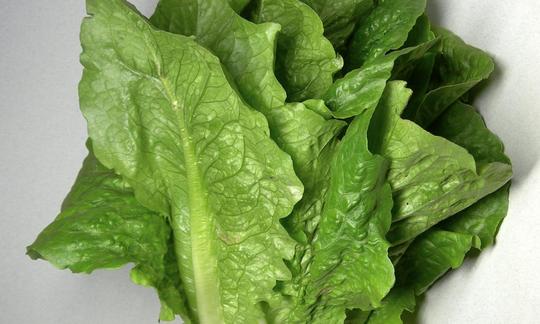

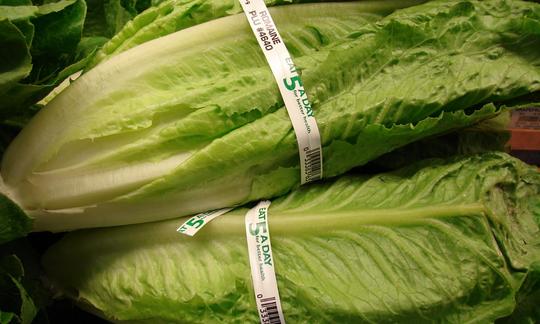

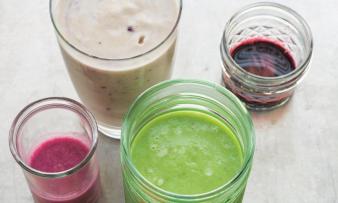
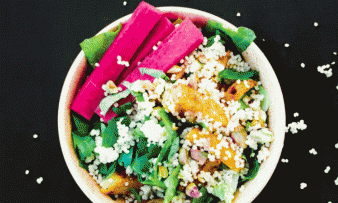
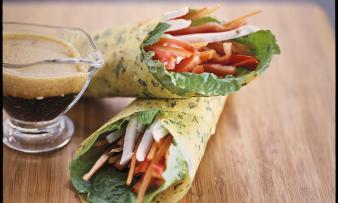





Comments